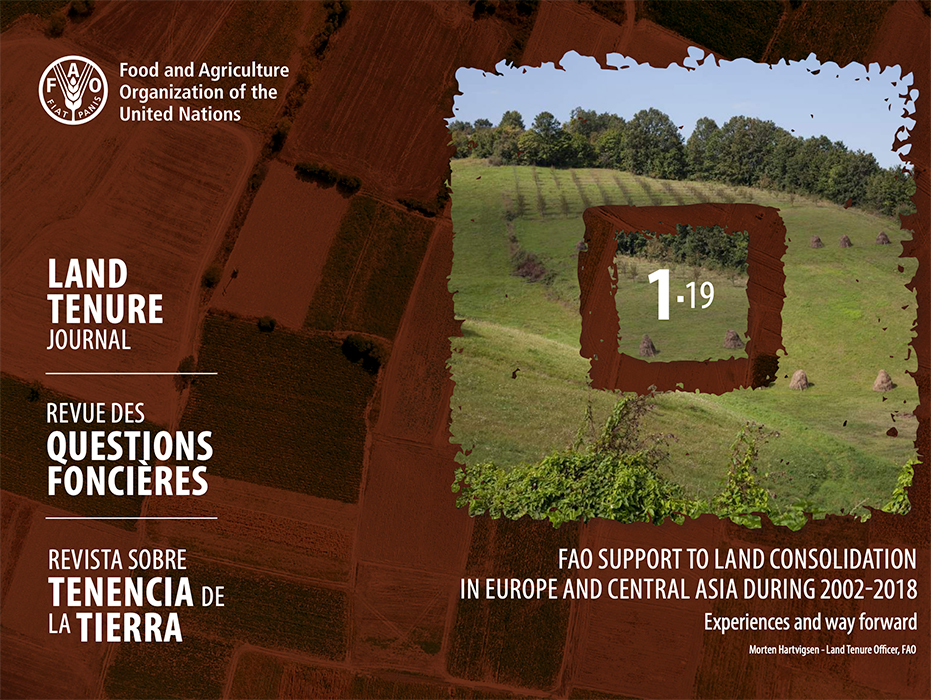Resource information
Shortly after the Food and Agriculture Organization of the United Nations (FAO) was founded in 1945, the organization had started to support member countries addressing structural problems in agriculture with land fragmentation and small holding and farm sizes through the development of land consolidation instruments (Binns, 1950). During the 1950s and 1960s, FAO provided technical assistance to the development of land consolidation in member countries in Europe such as Turkey, Greece, Spain and Cyprus, but also in the Near East and Asia (Meliczek, 1973). Seminars with experts from the member countries were organized through the established Working Party on Consolidation of Holdings. In 1955, looking back at the first decade of activities of the organization, FAO concluded that “Excessive fragmentation or uneconomically small holdings may prevent the farmer from using his time to best advantage or adopting modern means of production, e.g. mechanization” (FAO, 1955). In the second half of the 1950s, a study was conducted on best practices of land consolidation in Europe (Jacoby, 1959).
In the late 1990s, land fragmentation and land consolidation re-appeared on the agenda, this time in the context of CEE where land reforms from the beginning of transition in the 1990s had led to excessive land fragmentation and small farm sizes in most of the countries (Hartvigsen, 2013a).
FAO began to document and address problems in this area (Palmer et al., 2004). The Munich Symposium in 2002 was a milestone in the process and the first of so far 18 regional workshops held to date on land consolidation, land banking, land market development and related topics.1 FAO has supported member countries in Europe and Central Asia since 2002 to prepare for national land consolidation programmes through i) preparation of technical guidelines and publications, ii) field projects, and iii) by organizing the mentioned series of regional workshops and establishment of an informal network of land tenure professionals. Since 2010, the network is known as LANDNET.
The objective of this paper is to present the FAO experiences of supporting member countries related to land consolidation from 2000 on, but also to reflect on the lessons learned and the way forward. The endorsement in 2012 of the Voluntary Guidelines on the Responsible Governance of Tenure of Land, Fisheries and Forests in the Context of National Food Security (VGGT) (FAO, 2012), and the adoption in 2015 of the 2030 Agenda for Sustainable Development with 17 Sustainable Development Goals (SDGs) and 169 associated targets, further require reflection to ensure that all development initiatives related to land tenure and beyond are in the best possible way in line with VGGT and contribute to achieving the SDGs.


